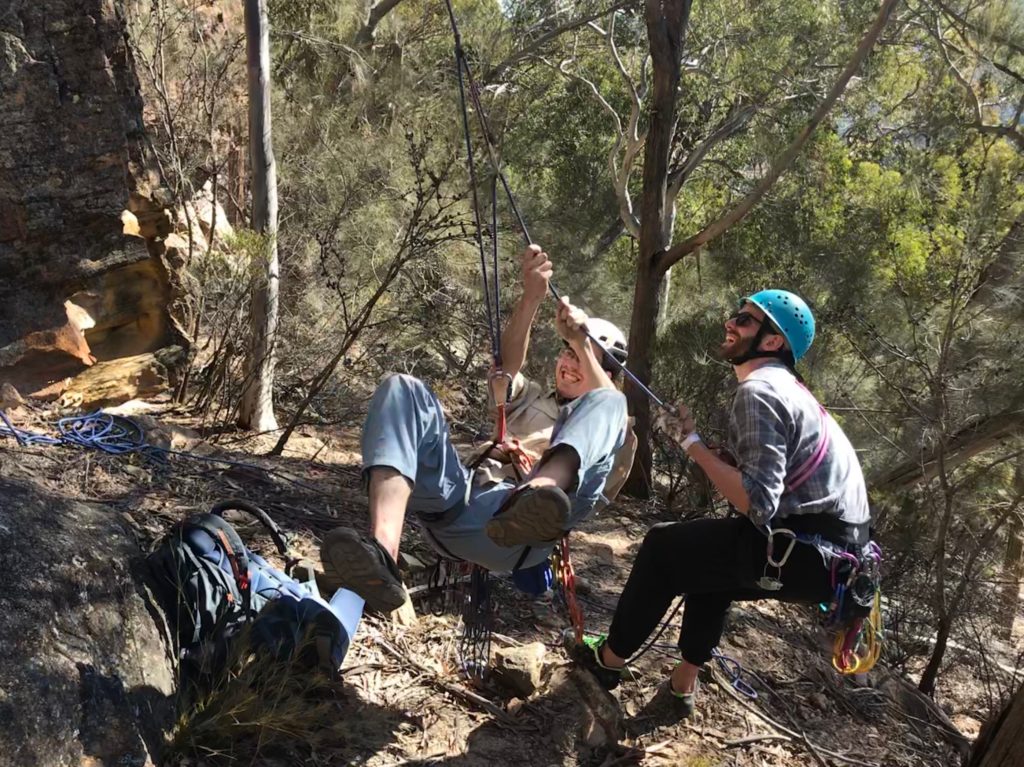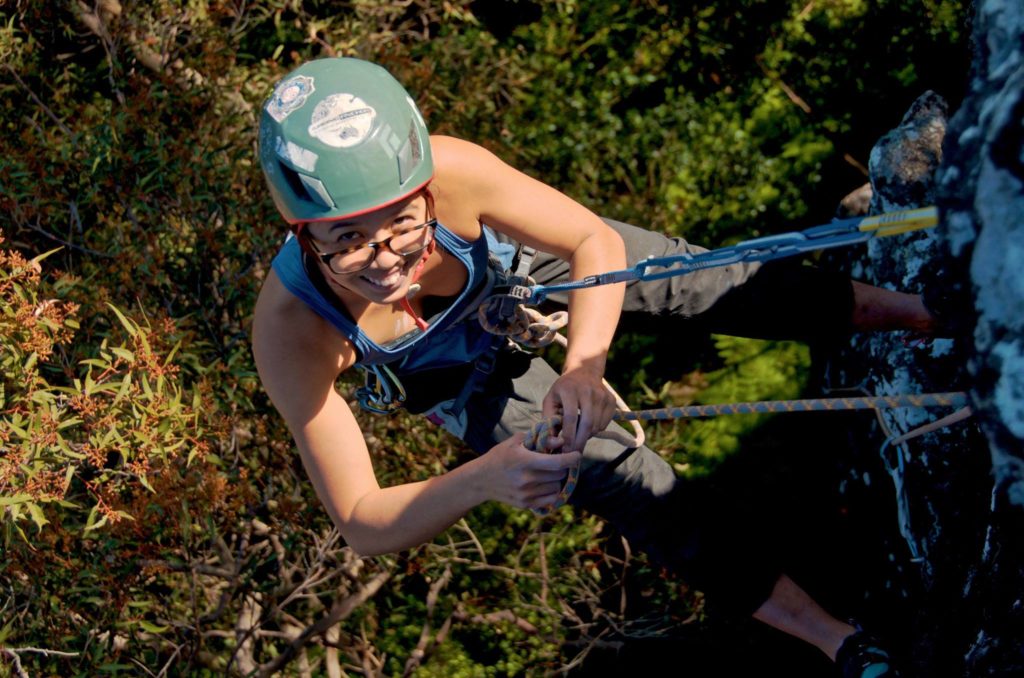These pages do not equip you with the skills to lead or go on a trip. The author and club accept no responsibility for the actions of those relying on the information herein. Outdoors activities are undertaken at an individual’s own risk. These pages contain general tips and advice. Use it as a guide to know what is advisable to have with you and what you should learn from appropriate courses and experienced leaders.
The climbing trip leading tips on this page are designed to complement the main Trip Leading 101 page. Please see that page for general information on running any club trip.
What Skills Do I Need?
If you don't currently have all these skills, ask an experienced trip leader to teach you! Attend a club workshop, read widely or take a professionally taught course. However, to lead a climbing trip you need to know how to:
- Lead climb and lead belay
- Build anchors (with a sport quad, static rope or trad gear depending on location)
- Clean a climb
- Abseil and avoid rope wear
Before the Trip:
- Pick a reasonable group size:
- Normally 8 to avoid clogging any single crag with a larger group.
- Absolute maximum of 12 people if you have 3+ trip leaders and are at a large crag.
- Think about splitting the trip into two if you have more than 8 participants (and ask around for more trip leaders if necessary).
- Make sure every trip participant has before the trip:
- At least 1L water (2L in summer)
- Food: lunch, snacks.
- Helmet*
- Headtorch (in case you have to walk out in the dark)
- Harness*
- Belay device and a carabiner*
- Climbing shoes* (optional but highly recommended)
- Sunscreen
- Items with an asterisk (*) can be borrowed from the gear cupboard.
- As a trip leader, you should be equipped with (in addition to the standard gear above):
- First aid kit (including snake bite bandages)
- Dynamic ropes
- Rope protectors if the ropes will be running over edges
- Anchor building materials
- Quickdraws
- Trad gear if necessary
- 2 prusiks to allow ascending a rope if needed
- You can ask what communal gear (e.g. ropes) people already have, to avoid having to bring it all yourself.
During the Trip:
- All trip participants should be observed during their first belay to ensure competency.
- This observation can be performed by the trip leader, assistant trip leader, or any other experienced person on the trip.
- If time allows, the trip leader or assisting trip leader should ideally simulate a fall with each new belayer to ensure that they are prepared for the forces generated by an unexpectedly long fall.
- Top-roping should always be done through a quad anchor if possible.
- If trip leaders choose to use two quickdraws, or similar, then they should pay careful attention to the anchor.
- Ideally, two quickdraws should only be used where they are easily visible from the ground.
- Never top-rope directly though fixed bolts or chains. Always attach personal or club gear to prevent wear of fixed anchors.
- Ensure that the rope is not running over sharp edges - it is both a cost issue for the club to constantly be replacing ropes, but it is also a safety issue if the damage is severe enough and happens without notice.
- Practice safe cleaning technique.
- Keep an eye on beginners, don't run off to try your project if it means leaving inexperienced members unsupervised.
Do your best to be safe out there, learn as much as you can, accompany experienced leaders and of course, have fun 🙂





